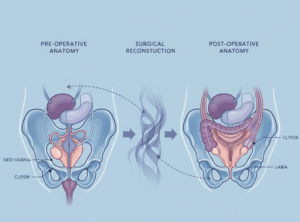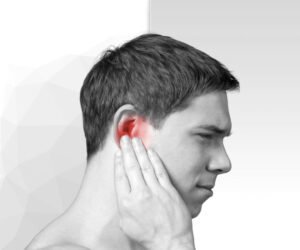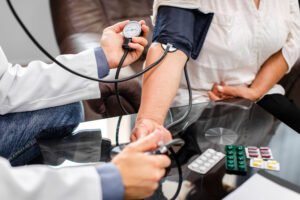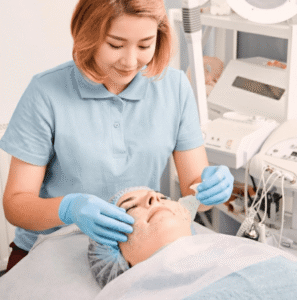What It Is
Microtia reconstruction is a specialized surgical procedure to create or restore a normal-looking ear in patients born with microtia (a congenital condition where the outer ear is small, malformed, or absent). It may also be performed for patients who lost an ear due to trauma, burns, or tumor removal.
In Korea, microtia reconstruction is performed with world-class precision and artistry. Korean plastic and reconstructive surgeons use state-of-the-art techniques such as autologous rib cartilage framework reconstruction or advanced alloplastic implants (like Medpor) to achieve natural, long-lasting results.
Why It’s Done
Medical Purposes:
- Restores missing or underdeveloped ear structure
- Improves hearing outcomes when combined with middle ear surgery (in selected cases)
- Protects the ear canal (if present) by providing structural coverage
Cosmetic & Psychological Purposes:
- Creates a natural ear appearance for improved facial balance
- Enhances self-confidence and social comfort
- Especially important for children to reduce psychosocial stress at a young age
Patient Considerations:
- Typically performed on children aged 6–10 years (once rib cartilage has developed enough)
- Also available for adolescents and adults with congenital microtia or traumatic ear loss
- Ideal candidates are healthy, non-smoking individuals with realistic expectations
Alternatives
- Prosthetic Ears: Custom silicone ears worn externally; non-surgical but less natural and require daily maintenance
- Medpor (Porous Polyethylene) Implants: Alloplastic ear framework covered with the patient’s tissue; less invasive than rib cartilage harvest
- Observation: Some patients may choose no reconstruction if function is preserved and appearance is not a concern
Preparation
Patients preparing for microtia reconstruction in Korea undergo:
- Detailed Consultation: With plastic surgeons, sometimes combined with ENT specialists
- Imaging & Measurements: 3D imaging, CT scans, and evaluation of the opposite ear for symmetry
- Health Evaluation: Blood tests and overall fitness assessment
- Pre-Operative Planning: Families are counseled about timing, surgical stages, and expectations
How It’s Done
Type: Major reconstructive surgery, performed under general anesthesia
Duration: Several hours, often staged over multiple procedures
Techniques:
- Autologous Rib Cartilage Reconstruction
- Cartilage is harvested from the patient’s rib cage
- A framework shaped like a natural ear is sculpted
- The framework is placed under the skin at the ear site
- Later stages refine ear projection and contour
- Alloplastic Implant (Medpor) Reconstruction
- A synthetic porous implant is shaped into an ear framework
- Covered with vascularized tissue and skin for durability
- Usually requires fewer surgical stages compared to rib cartilage
Hospitalization: 3–7 days depending on technique and complexity
Recovery
- Initial Weeks: Swelling and mild discomfort, managed with medications
- Dressings: Protective bandages applied to safeguard the new ear shape
- Downtime: Children return to school in 2–3 weeks; adults in about 1–2 weeks
- Final Results: Take several months to fully refine as swelling subsides
- Long-Term Outlook: Reconstructed ears are permanent and durable, though minor touch-ups may be needed
Possible Complications
- Swelling, bruising, or temporary discomfort
- Infection (rare with modern techniques)
- Cartilage resorption or implant complications
- Asymmetry between ears
- Hypertrophic scarring (reduced with proper scar care and adjunctive therapies)
Treatment Options in Korea
Diagnosis
Korean clinics use:
- 3D CT Scans for detailed anatomical mapping
- Digital Simulations to plan ear symmetry and shape
- Multidisciplinary Evaluation with ENT and reconstructive surgeons for functional and aesthetic planning
Medical Treatments
- Hearing rehabilitation with hearing aids or bone-conduction devices (for patients with microtia and hearing loss)
- Psychological support for children and families dealing with congenital deformities
Surgical or Advanced Therapies
- Autologous Rib Cartilage Reconstruction: Gold standard, especially for children
- Medpor Implant Reconstruction: Shorter surgical timeline, often preferred by adults
- Hybrid Techniques: Combining cartilage with implant or fat grafting for refined shaping
- Revision Reconstruction: Corrects failed or unsatisfactory previous surgeries
Rehabilitation and Support
- Regular follow-up visits for healing assessment
- Scar care with silicone sheets, gels, or laser treatments
- Speech and hearing support if needed
- International patient services: translation, accommodation, transport, and long-term follow-up care













